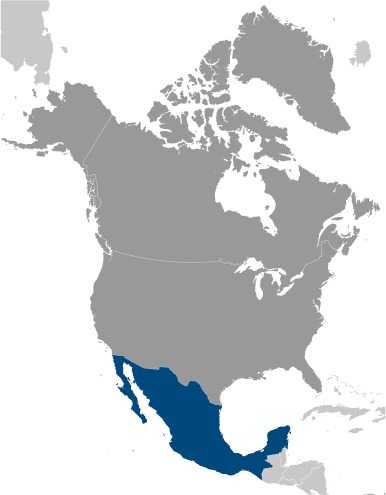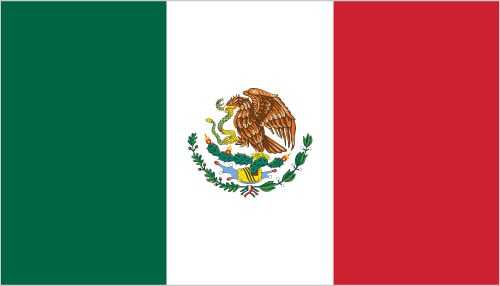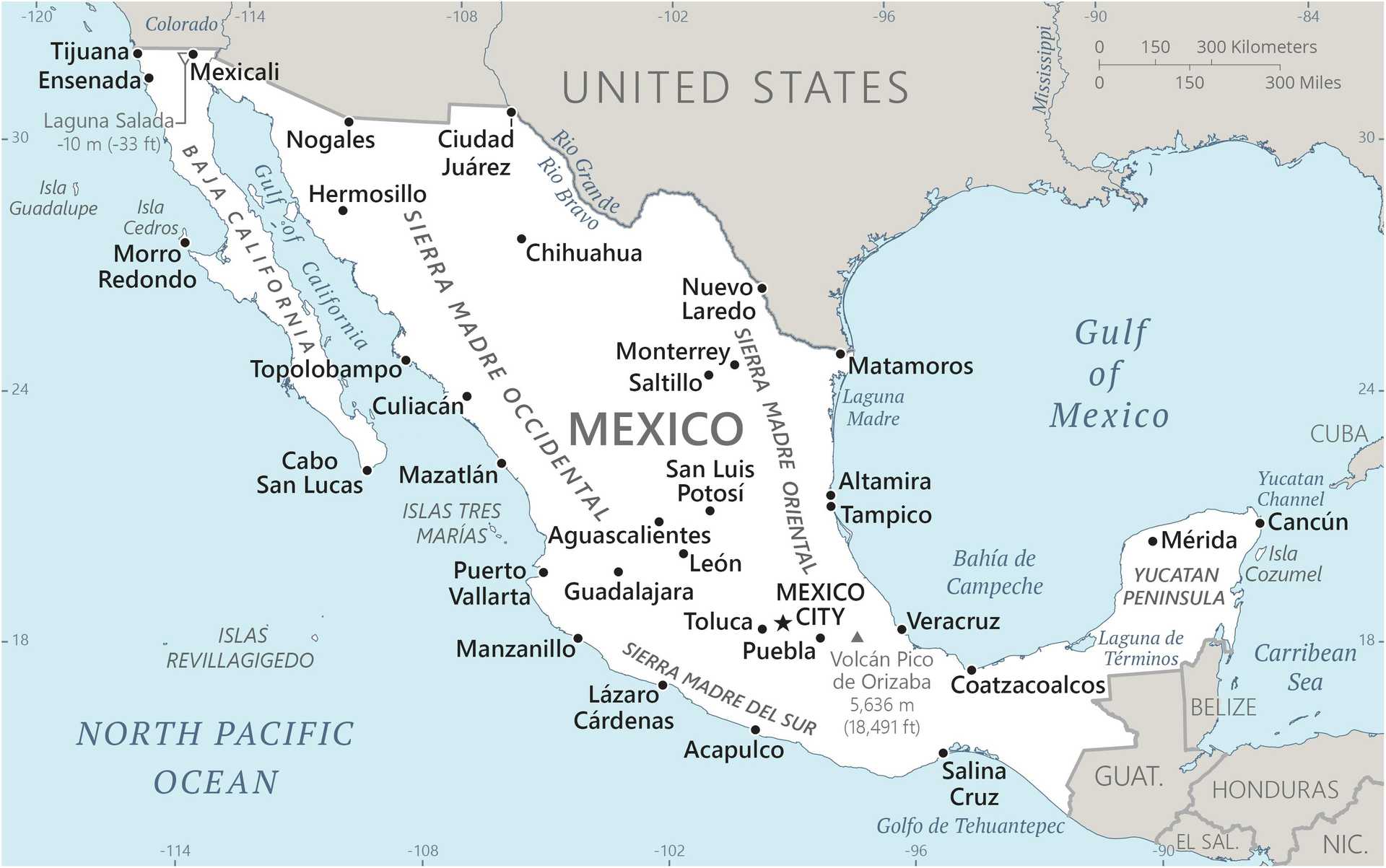Introduction
Background
Mexico was the site of several advanced Amerindian civilizations -- including the Olmec, Toltec, Teotihuacan, Zapotec, Maya, and Aztec -- until Spain conquered and colonized the area in the early 16th century. Administered as the Viceroyalty of New Spain for three centuries, it achieved independence early in the 19th century.
Geography
Area
total: 1,964,375 sq km
land: 1,943,945 sq km
water: 20,430 sq km
Climate
varies from tropical to desert
Natural resources
petroleum, silver, antimony, copper, gold, lead, zinc, natural gas, timber
People and Society
Population
total: 130,739,927
male: 63,899,138
female: 66,840,789 (2024 est.)
Ethnic groups
Mestizo (Indigenous-Spanish) 62%, predominantly Indigenous 21%, Indigenous 7%, other 10% (mostly European) (2012 est.)
Languages
Spanish only 93.8%, Spanish and indigenous languages 5.4%, indigenous only 0.6%, unspecified 0.2%; note - indigenous languages include various Mayan, Nahuatl, and other regional languages (2020 est.)
Religions
Roman Catholic 78%, Protestant/evangelical Christian 11.2%, other 0.002%, unaffiliated (includes atheism) 10.6% (2020 est.)
Population growth rate
0.72% (2024 est.)
Government
Government type
federal presidential republic
Capital
name: Mexico City (Ciudad de Mexico)
Executive branch
chief of state: President Andrés Manuel LÓPEZ OBRADOR (since 1 December 2018); note - the president is both chief of state and head of government
head of government: President Andrés Manuel LÓPEZ OBRADOR (since 1 December 2018)
Legislative branch
description:
bicameral National Congress or Congreso de la Unión consists of:
Senate or Cámara de Senadores (128 seats; 96 members directly elected in multi-seat constituencies by simple majority vote and 32 directly elected in a single, nationwide constituency by proportional representation vote; members serve 6-year terms)
Chamber of Deputies or Cámara de Diputados (500 seats; 300 members directly elected in single-seat constituencies by simple majority vote and 200 directly elected in a single, nationwide constituency by proportional representation vote; members serve 3-year terms)
Economy
Economic overview
one of the world’s largest economies; USMCA buttresses its manufacturing sector; has underperformed growth targets for three decades; COVID-19 disrupted export-based economy; corruption and cartel-based violence undermine economic stability
Real GDP (purchasing power parity)
$2.583 trillion (2022 est.)
$2.486 trillion (2021 est.)
$2.349 trillion (2020 est.)
Real GDP per capita
$20,300 (2022 est.)
$19,600 (2021 est.)
$18,600 (2020 est.)
Agricultural products
sugarcane, maize, milk, oranges, sorghum, tomatoes, chicken, wheat, chilies/peppers, lemons/limes (2022)
Industries
food and beverages, tobacco, chemicals, iron and steel, petroleum, mining, textiles, clothing, motor vehicles, consumer durables, tourism
Exports
$626.298 billion (2022 est.)
$533.22 billion (2021 est.)
$443.575 billion (2020 est.)
Exports - partners
US 77%, Canada 4%, China 2%, Taiwan 1%, South Korea 1% (2022)
Exports - commodities
cars, computers, vehicle parts/accessories, crude petroleum, trucks (2022)
Imports
$668.59 billion (2022 est.)
$558.969 billion (2021 est.)
$424.896 billion (2020 est.)
Imports - partners
US 56%, China 17%, Germany 3%, South Korea 3%, Japan 2% (2022)
Imports - commodities
refined petroleum, vehicle parts/accessories, machine parts, integrated circuits, natural gas (2022)
Exchange rates
Mexican pesos (MXN) per US dollar -
Exchange rates:
20.127 (2022 est.)
20.272 (2021 est.)
21.486 (2020 est.)
19.264 (2019 est.)
19.244 (2018 est.)
Page last updated: Tuesday, May 07, 2024




